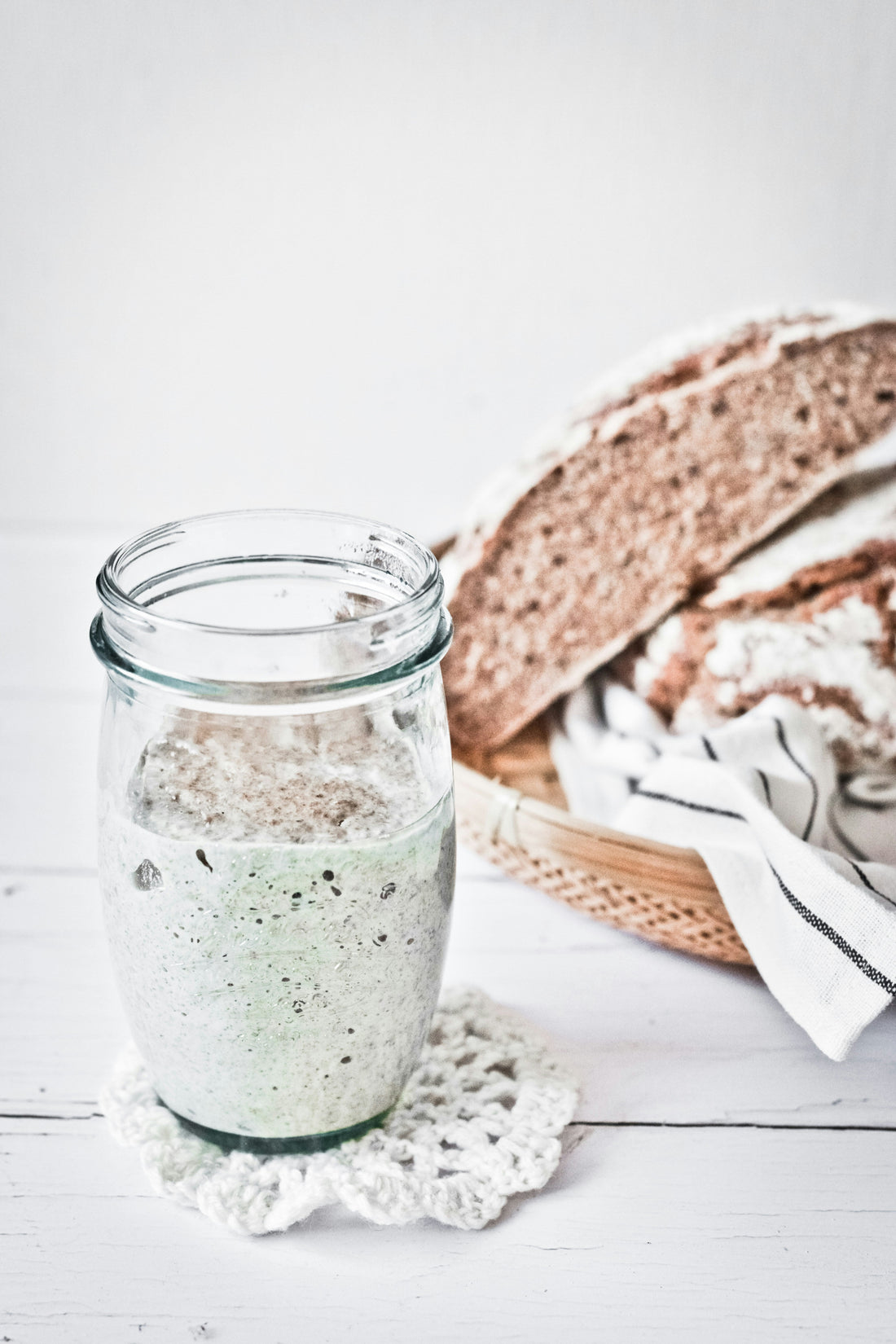
Sourdough Starter vs. Discard: What’s the Difference & How to Use Both
Share
This post may contain affiliate links, including Amazon affiliate links. As an Amazon Associate, I earn from qualifying purchases—at no extra cost to you. Read my full disclosure here. Thank you for supporting 7 Good Ears!
Starter
- Living sourdough culture.
- Made of flour + water that you feed on a regular basis.
- It bubbles, grows, and becomes the yeast for your bread when fed (activated). When take a portion to bake with, that portion is also called starter.
Discard
- The portion of starter you remove before feeding (if you maintain a lean starter, you may not have a lot of discard).
- Called “discard” because if you kept all of it and kept feeding, your starter would grown endlessly, requiring huge amounts of flour and maintenance.
- It is not “bad” or “dead” – it’s just unfed starter. You can throw it away or use it in recipes like pancakes, muffins, crackers, cookies, or quick breads.
Here’s a helpful analogy:
- Starter: The pet you keep and feed.
- Discard: the extra you don’t need to keep alive, but can still use.
Pro Tip: You don't have to maintain a large starter to keep up with regular bakes. Check out "Fresh Milled Sourdough Starter Maintenance: How to Keep Yours Lively and Happy" for more guidance.
